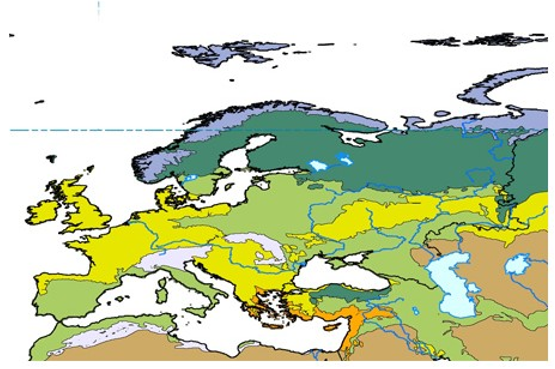The largest typical size for grains of sand that can be commonly moved by wind is
A) 5 micrometers.
B) 0.5 millimeter.
C) 1.0 millimeter.
D) 1.0 centimeter.
Answer: B
Environmental & Atmospheric Sciences
You might also like to view...
Aristotle's view of natural laws is best understood by
A. reasoning. B. patterns. C. mathematics. D. experiment.
Environmental & Atmospheric Sciences
In the map below, yellow represents

A) temperate forest.
B) tundra.
C) boreal forest.
D) grassland.
Environmental & Atmospheric Sciences
Devonian mass extinctions are explained by the demise of tropical climates during global
cooling events Indicate whether the statement is true or false.
Environmental & Atmospheric Sciences
A tropical storm system with winds in excess of 74 mi/hr in the eastern Pacific is called a(n) ____
A) anticyclone B) tornado C) extratropical cyclone D) hurricane
Environmental & Atmospheric Sciences